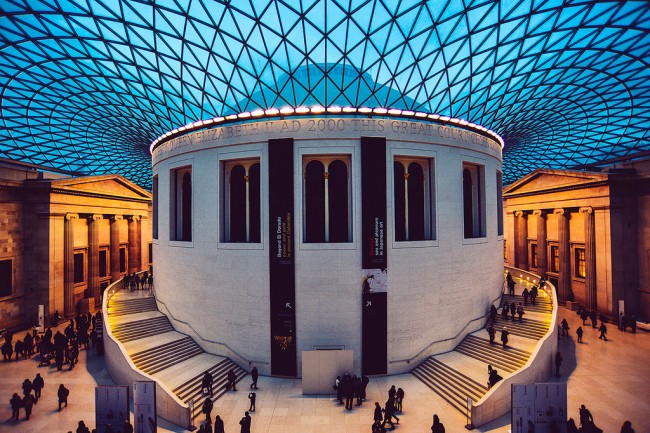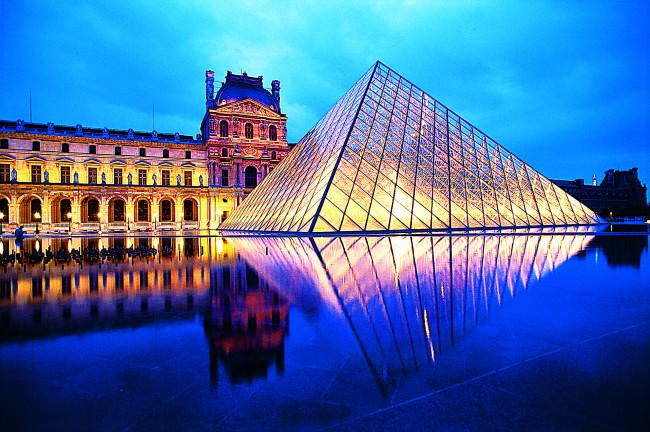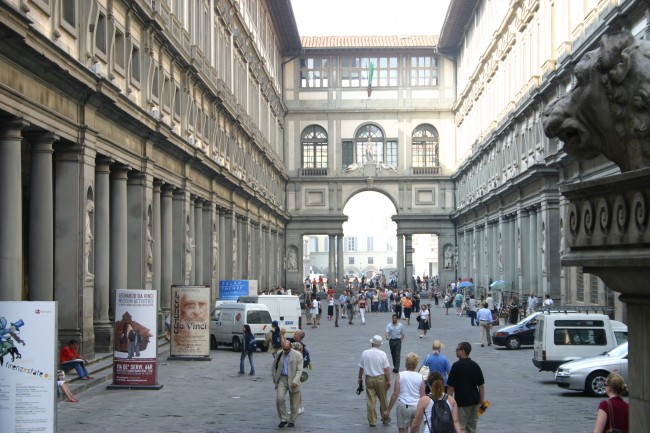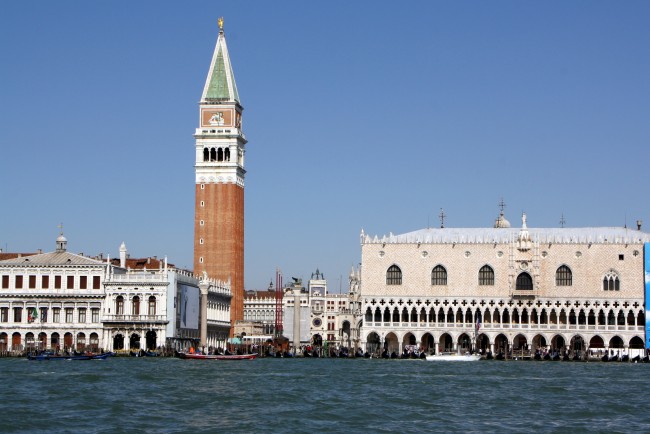10 World-Class Museums You Can Visit Online

Visiting world-famous museums is one of the most enticing aspects of traveling abroad. Works of art you’ve only seen in text books are right in front of your eyes giving you access to the detail of their artistic choices. If your classroom is located a plane ride away from Europe, however, taking your students to visit world-class museums is something you only get to do every once in a great while. What if you want to give your students access to these world-class works of art in between trips abroad?
That’s where techology comes to the rescue. In today’s day and age, virtual museum tours are increasingly commonplace. Most of the art in the world’s best museums are accessible via their own virtual tour technology or Google’s Cultural Institute. Here are 10 of Europe’s most renouned art museums that you can visit online:
1. The British Museum – London, England
The British Museum is a museum dedicated to human history, art, and culture, located in the Bloomsbury area of London. Its permanent collection, numbering some 8 million works, is among the largest and most comprehensive in existence and originates from all continents, illustrating and documenting the story of human culture from its beginnings to the present. The British Museum was established in 1753, largely based on the collections of the physician and scientist Sir Hans Sloane. The museum first opened to the public on 15 January 1759, in Montagu House in Bloomsbury, on the site of the current museum building. Its expansion over the following two and a half centuries was largely a result of an expanding British colonial footprint and has resulted in the creation of several branch institutions, the first being the British Museum (Natural History) in South Kensington in 1881.
Access the collection online here.
2. The Louvre – Paris, France
The Louvre is one of the world’s largest museums. A central landmark of the city, it’s located on the Right Bank of the Seine in the 1st arrondissement. Nearly 35,000 objects from prehistory to the 21st century are exhibited over an area of 652,300 square feet. The Louvre is the world’s most visited museum receiving over 9million visitors in 2014. The museum opened on 10 August 1793 with an exhibition of 537 paintings, the majority of the works being royal and confiscated church property. It’s housed in the Louvre Palace, originally built as a fortress in the late 12th century under Philip II. Remnants of the fortress are visible in the basement of the museum. In 1682, Louis XIV chose the Palace of Versailles for his household, leaving the Louvre primarily as a place to display the royal collection, including, from 1692, a collection of ancient Greek and Roman sculpture. During the French Revolution, the National Assembly decreed that the Louvre should be used as a museum to display the nation’s masterpieces. The collection is divided among eight curatorial departments: Egyptian Antiquities; Near Eastern Antiquities; Greek, Etruscan, and Roman Antiquities; Islamic Art; Sculpture; Decorative Arts; Paintings; Prints and Drawings.
Access the collection online here.
3. The Dalí Theater and Museum – Figueres, Spain
Located a little over an hour away from Barcelona in Dalí’s hometown of Figueres, the Dalí Theater and Museum is one of the most interesting and popular museums in Northern Spain. The museum is home to one of the largest collections of Dalí’s work, and the building itself is a work of art. The heart of the museum is the building that housed the town’s theater when Dalí was a child, where one of the first public exhibitions of young Dalí’s art was shown. The old theater was burned during the Spanish Civil War and remained in a state of ruin for decades. In 1960, Dalí and the mayor of Figueres decided to rebuild it as a museum dedicated to the town’s most famous son. The artist himself is buried in the crypt below the stage in the theater.
Access the collection online here.
4. The Vatican Museums – Vatican City
The Vatican Museums are the museums of the Vatican City located within the city’s boundaries. They display works from the immense collection built up by the Popes throughout the centuries including some of the most renowned classical sculptures and most important masterpieces of Renaissance art in the world. The Vatican Museums originated as a group of sculptures collected by Pope Julius II. As seen today, the Vatican Museums are a complex of different pontifical museums and galleries that began under the patronage of the popes Clement XIV and Pius VI. In 2013, they were visited by 6 million people, which combined makes it the 3rd most visited art museum in the world.
Access the collection online here.
5. The Tate Britain – London, England
Tate Britain (known from 1897 to 1932 as the National Gallery of British Art and from 1932 to 2000 as the Tate Gallery) is an art museum on Millbank in London. It is part of the Tate network of galleries in England (named after their founder Sir Henry Tate), with Tate Modern, Tate Liverpool and Tate St Ives. It is the oldest gallery in the network, having opened in 1897. It houses a substantial collection of the art of the United Kingdom since Tudor times. It is one of the largest museums in the country. The museum site was once a prison before being converted to a museum for its opening.
Access the collection online here.
6. The Rijksmuseum – Amsterdam, The Netherlands
The Rijksmuseum is a Dutch national museum dedicated to arts and history in Amsterdam. The museum is located at the Museum Square in the borough Amsterdam South, close to the Van Gogh Museum, the Stedelijk Museum Amsterdam, and the Concertgebouw. The Rijksmuseum was founded in The Hague in 1800 and moved to Amsterdam in 1808, where it was first located in the Royal Palace and later in the Trippenhuis. The current main building first opened its doors in 1885. In 2013 and 2014, it was the most visited museum in the Netherlands with record numbers of 2.2 million and 2.45 million visitors. It’s also the largest art museum in the country. The museum has on display 8,000 objects of art and history, from their total collection of 1 million objects from the years 1200–2000, among which are some masterpieces by Rembrandt, Frans Hals, and Johannes Vermeer.
Access the collection online here.
7. The Museo Nacional Centro de Arte Reina Sofia – Madrid, Spain
The Museo Nacional Centro de Arte Reina Sofía (also called the Museo Reina Sofía or simply The Sofia) is Spain’s national museum of 20th-century art. The museum was officially inaugurated on September 10, 1992 and is named for Queen Sofía. It is located in Madrid, near the Atocha train and metro stations, at the southern end of the so-called Golden Triangle of Art. The museum is mainly dedicated to Spanish art. Highlights of the museum include excellent collections of Spain’s two greatest 20th century masters, Pablo Picasso and Salvador Dalí. The most famous masterpiece in the museum is Picasso’s Guernica. Along with its extensive collection, the museum offers a mixture of national and international temporary exhibitions in its many galleries, making it one of the world’s largest museums for modern and contemporary art.
Access the collection online here.
8. The Uffizi Gallery – Florence, Italy
The Uffizi was designed by Giorgio Vasari in 1560 for Cosimo I de’Medici to house the Granducal Magistratures of Tuscany. Over time, the top floor loggia became an exhibition of the dynastic collection of ancient sculpture, artwork and artifacts. After the house of Medici was extinguished, the art treasures remained in Florence by terms of the famous Patto di famiglia negotiated by Anna Maria Luisa, the last Medici heiress; it formed one of the first modern museums. The gallery had been open to visitors by request since the sixteenth century, and in 1765 it was officially opened to the public. Today, it’s one of the most popular tourist attractions in all of Florence.
Access the collection online here.
9. The Doge’s Palace – Venice, Italy
The Doge’s Palace is a palace built in Venetian Gothic style, and one of the main landmarks of the city of Venice in northern Italy. The palace was the residence of the Doge of Venice, the supreme authority of the former Republic of Venice, opening as a museum in 1923. Today, it is one of the 11 museums run by the Fondazione Musei Civici di Venezia.
Access the collection online here.
10. The Belvedere – Vienna, Austria
The Belvedere palaces were the summer residence of Prince Eugene of Savoy (1663–1736). As one of Europe’s most stunning Baroque landmarks, it is listed as a UNESCO World Heritage Site. Today the Belvedere houses the greatest collection of Austrian art dating from the Middle Ages to the present day, complemented by the works of international artists. At the Upper Belvedere, visitors not only encounter artworks drawn from over five hundred years of art history but can also experience the magnificent staterooms. In addition to the Lower and Upper Belvedere, the museum has further sites at Prince Eugene’s town palace and the 21er Haus as well as the Gustinus Ambrosi Museum. The Belvedere’s art collection presents an almost complete overview of the development of art in Austria and thus an insight into the country’s history. The world’s largest collection of Gustav Klimt’s paintings lies at the heart of the presentation of “Art around 1900”, on show at the Upper Belvedere. Its glittering highlights are Klimt’s golden pictures the Kiss (1907/08) and Judith (1901) and masterpieces by Egon Schiele and Oskar Kokoschka. Key works of French Impressionism and the greatest collection of Viennese Biedermeier art are further attractions at the museum.
Access the collection online here.
How do you use virtual tours of art museums in your classroom? Let us know in the comment section below!




















A very handy tool to use in the classroom before you go on your educational odyssey. This will help prepare your students for their visit. Thank you!